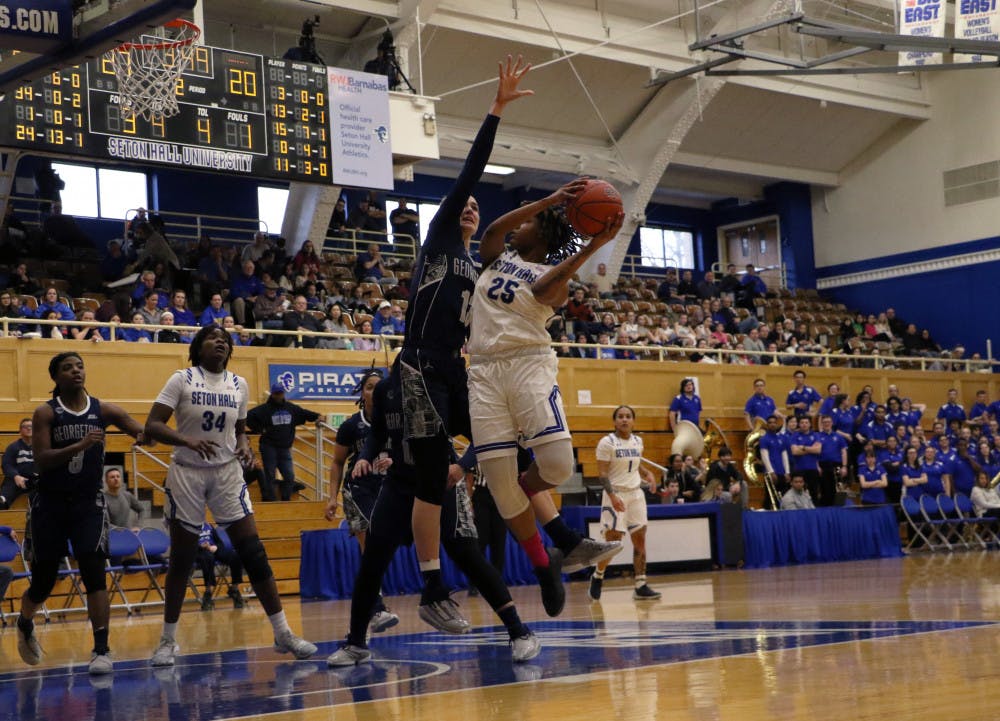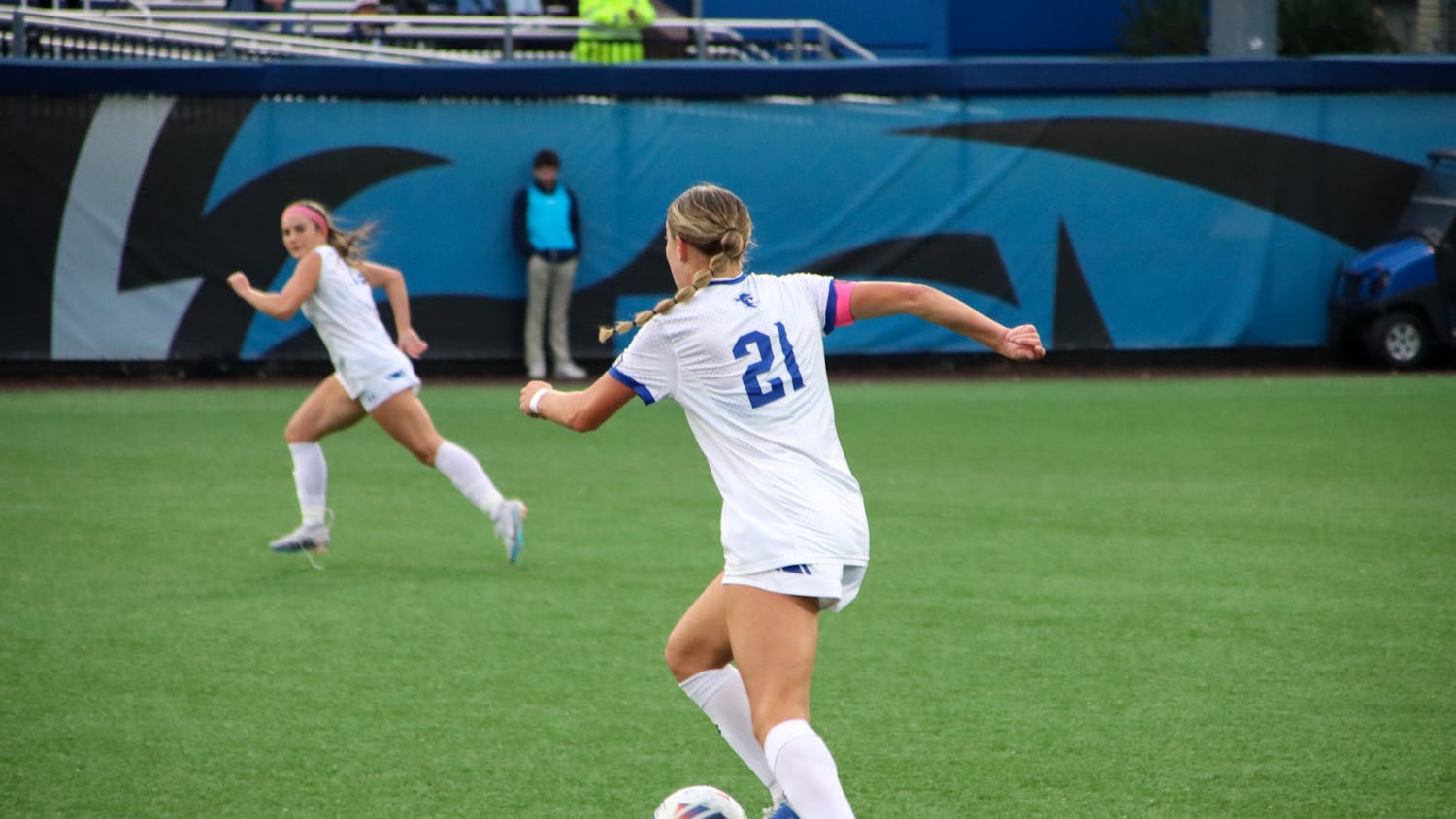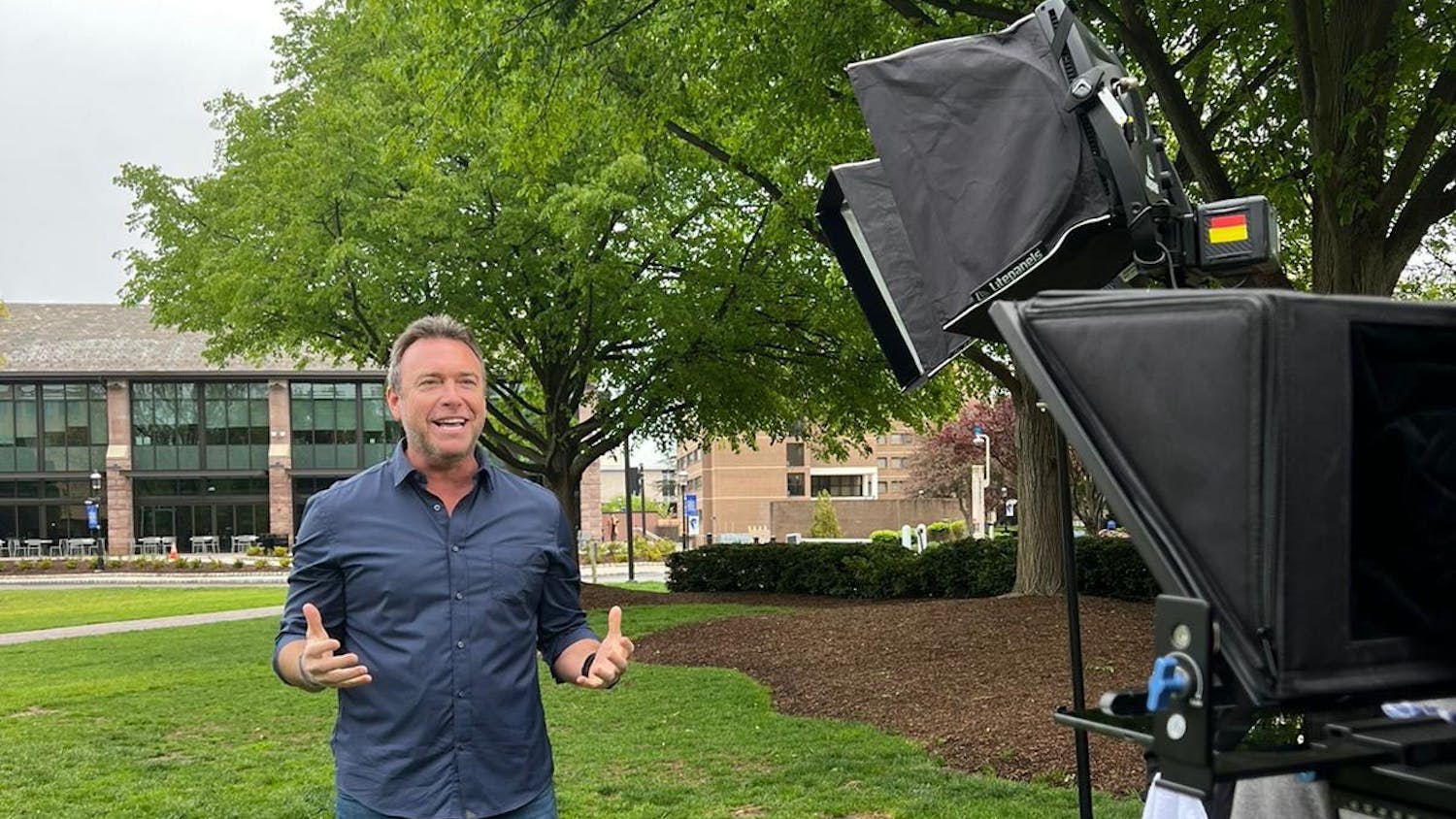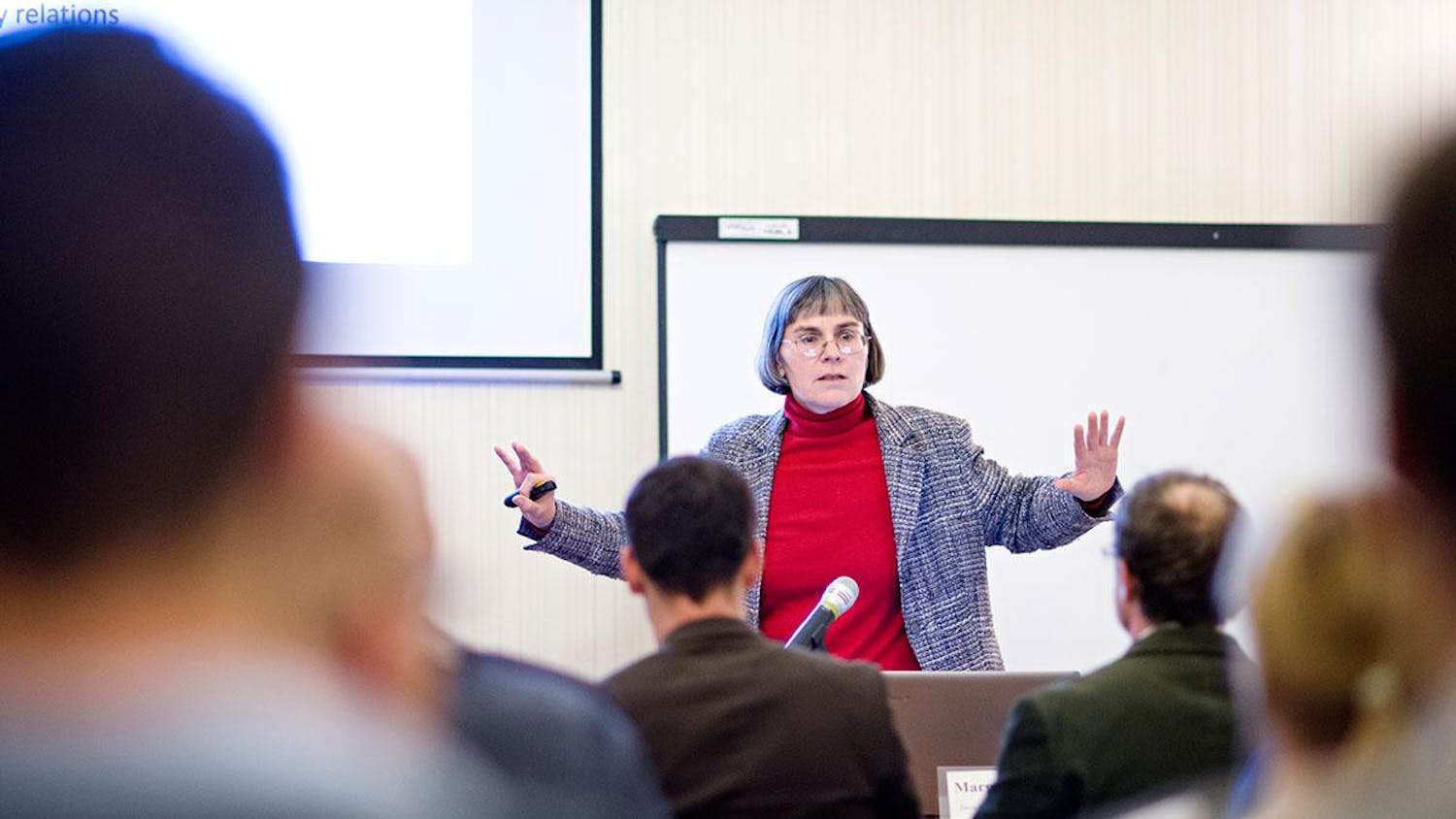[caption id="attachment_10902" align="alignnone" width="319"] Photos Courtesy of Adejoke Tugbiyete (top) and Merton D. Simpson Gallery (bottom)
Photos Courtesy of Adejoke Tugbiyete (top) and Merton D. Simpson Gallery (bottom) [/caption]
Culture. Perspective. Narrative. Art captures the life, beauty, issues and interconnected, but varied, perspectives which ultimately create narratives.
The Wash is Gallery presenting “A River Depends on its Tributaries,” an exhibit that explores contemporary art and African culture. The exhibit provides a different perspective through bringing distinct works based on a culture dissimilar to Seton Hall. Whether it be a colorful painting or culturally-oriented mask, the gallery allows students to learn beyond classroom walls.
The exhibition includes the works of a variety of individual artists alongside sculptures and additional works of art provided by the Merton D. Simpson Gallery. The artists include Willie Cole, Ben Jones, Chakaia Booker, Merton Simpson and local artists. Student interns in addition with art historians, art writers, art collectors and framers helped in advance to prepare the exhibit.
“The show demonstrates that metaphorically, by including both African and contemporary art in a conversation noting how various African influences have been absorbed into the fabric of Western culture,” Jeanne Brasile, Director of the Walsh Gallery and curator of the exhibit said.
“The title of the exhibition is a Mende proverb that imparts that any leader is dependent upon his or her followers. Similarly, world civilization and the vast human river we swim in, is indebted to the stream of African culture flowing through it.”
The gallery, including a number of sculptures, paintings and masks provides the Seton Hall community to be exposed to works which projects the concept of understanding African ritual objects and indigenous art. It also emphasizes the university’s focus on the concept of global education.
“It’s very exciting to see such a culturally-rich exhibition come to the Walsh Gallery. Being able to see historical African artifacts up close is fascinating, especially as you learn more about their history and the purpose they served,” said Joseph Yankus, Walsh Gallery’s collections assistant.
Students can get more involved through a variety of ways. The gallery offers students the chance to volunteer and intern especially when working in graphic design, curation, management and exhibition development.
According to Brasile, through the work, the artists in this exhibition address a wide range of subjects that are presented through the masks including dance, music, performance, ritual, ancestry, gender duality and additional narratives.
“I’ve learned so much just by assisting with the installation of this exhibit and highly recommend any student looking to gain cultural growth and understanding to come check out the show,” Yankus said.
Brasile, who wears many hats to successfully present the gallery, said she doesn’t want visitors who view the art at the exhibit to learn any specific thing, but to bring their own unique perspective to the show and make personal connections between the works.
Student organizations can use to the space for hosting events while the members of the SHU community can request to present their research, artworks and fundraisers at the gallery. There are different opportunities for students and staff to use the exhibition space.
The opening reception will be held on Thursday, September 17 from 5 p.m. to 9 p.m., and the exhibit will run through Oct. 12. The gallery is located on the first floor of the Walsh Library.
Nisha Desai can be reached at nisha.desai@student.shu.edu
[/caption]
Culture. Perspective. Narrative. Art captures the life, beauty, issues and interconnected, but varied, perspectives which ultimately create narratives.
The Wash is Gallery presenting “A River Depends on its Tributaries,” an exhibit that explores contemporary art and African culture. The exhibit provides a different perspective through bringing distinct works based on a culture dissimilar to Seton Hall. Whether it be a colorful painting or culturally-oriented mask, the gallery allows students to learn beyond classroom walls.
The exhibition includes the works of a variety of individual artists alongside sculptures and additional works of art provided by the Merton D. Simpson Gallery. The artists include Willie Cole, Ben Jones, Chakaia Booker, Merton Simpson and local artists. Student interns in addition with art historians, art writers, art collectors and framers helped in advance to prepare the exhibit.
“The show demonstrates that metaphorically, by including both African and contemporary art in a conversation noting how various African influences have been absorbed into the fabric of Western culture,” Jeanne Brasile, Director of the Walsh Gallery and curator of the exhibit said.
“The title of the exhibition is a Mende proverb that imparts that any leader is dependent upon his or her followers. Similarly, world civilization and the vast human river we swim in, is indebted to the stream of African culture flowing through it.”
The gallery, including a number of sculptures, paintings and masks provides the Seton Hall community to be exposed to works which projects the concept of understanding African ritual objects and indigenous art. It also emphasizes the university’s focus on the concept of global education.
“It’s very exciting to see such a culturally-rich exhibition come to the Walsh Gallery. Being able to see historical African artifacts up close is fascinating, especially as you learn more about their history and the purpose they served,” said Joseph Yankus, Walsh Gallery’s collections assistant.
Students can get more involved through a variety of ways. The gallery offers students the chance to volunteer and intern especially when working in graphic design, curation, management and exhibition development.
According to Brasile, through the work, the artists in this exhibition address a wide range of subjects that are presented through the masks including dance, music, performance, ritual, ancestry, gender duality and additional narratives.
“I’ve learned so much just by assisting with the installation of this exhibit and highly recommend any student looking to gain cultural growth and understanding to come check out the show,” Yankus said.
Brasile, who wears many hats to successfully present the gallery, said she doesn’t want visitors who view the art at the exhibit to learn any specific thing, but to bring their own unique perspective to the show and make personal connections between the works.
Student organizations can use to the space for hosting events while the members of the SHU community can request to present their research, artworks and fundraisers at the gallery. There are different opportunities for students and staff to use the exhibition space.
The opening reception will be held on Thursday, September 17 from 5 p.m. to 9 p.m., and the exhibit will run through Oct. 12. The gallery is located on the first floor of the Walsh Library.
Nisha Desai can be reached at nisha.desai@student.shu.edu

Comments




